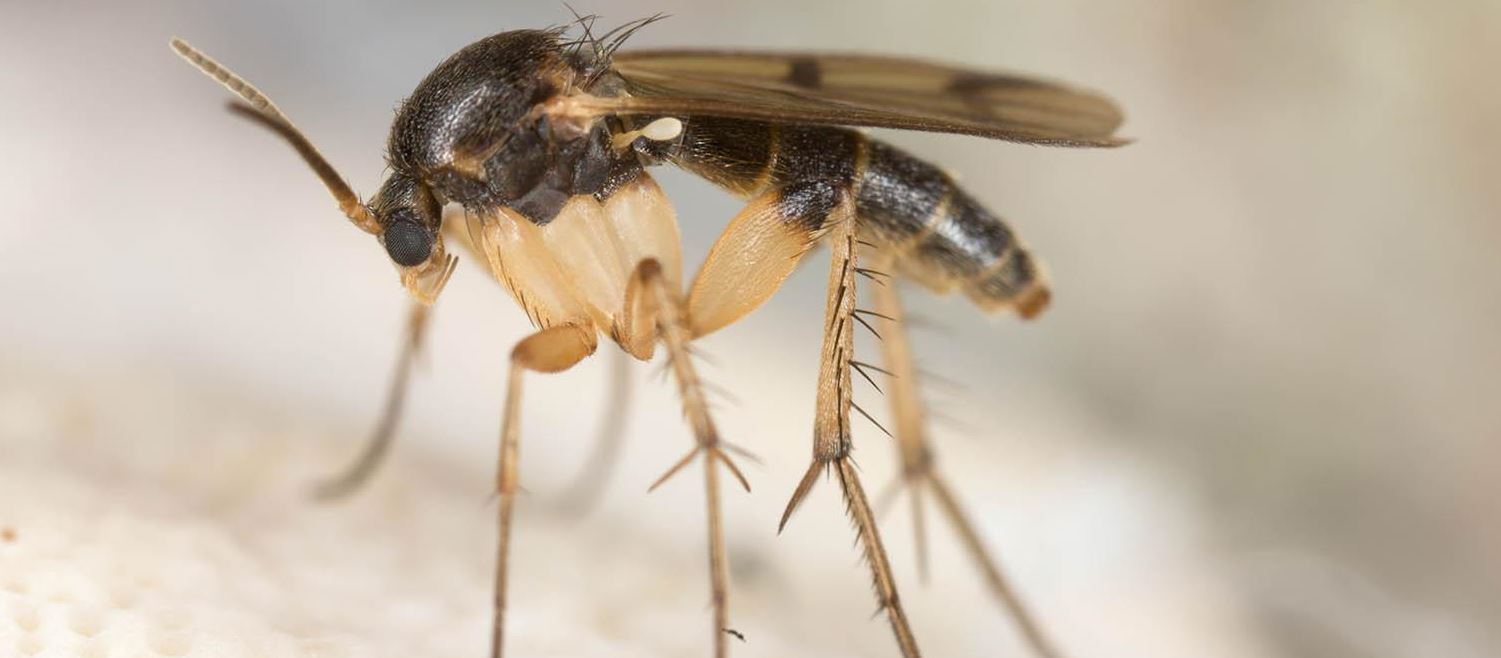Fungus Gnat Larvae: Appearance and Traits
While seemingly innocuous, the tiny, wriggling larvae of the fungus gnat can decimate plants in the home, greenhouse and garden.
Learning to identify these creatures means you can take positive steps to eliminate them, before they hatch into egg-laying adults, exacerbating the problem.
The key appearances and traits of fungus gnat larvae are:
- A quarter of an inch in size
- White, slender bodies
- Black head
- Leave shiny trails
- Live in the topsoil
What Are Fungus Gnat Larvae?
As the name suggests, fungus gnats are flying arthropods that adore fungi. It’s not the adult winged insects that are the main problem; it’s their larvae.
The fully grown fungus gnat is indeed unsightly. Perching on the leaves or flowers of your plants with its long legs and antennae, they make your prize begonias appear as if they’re covered in mosquitos.
What’s more, approach the plant or disturb them in any way, and they’ll welcome you by flying in a cloud around your head.
The issue arises when these adults lay eggs in your soil. These hatch into larvae, which thrive on moisture, decaying matter and fungi. Discontent with this smorgasbord of food, the larvae then begin to eat your plants.
Mainly, as these creatures are so small, they begin on the root system, particularly of young seedlings. Being voracious types, they can then move onto plant stems. This can cause infectious diseases such as Thielaviopsis, Pythium and Fusarium, wrecking your flora.
The Growth Into Larvae
Adult fungus gnats live around one week and can lay up to 200 eggs during this period. In one sitting — or birthing — they’ll expel, on average, 30 eggs on the surface of the soil or in small crevices. While the eggs are small, they’re easily identifiable by their distinctive white color and round shape. They measure about 0.04 of an inch in diameter.
Within around three to six days, at a temperature of 75 degrees Fahrenheit, they hatch into larvae.
In this stage of their life cycle, which follows the usual gnat sequence of egg, larva, pupa and adult, they’re at their most dangerous. They plow through your plants’ roots, building the energy they require to grow.
Furthermore, they spend more time at this larval stage — around 12–14 days than they do at any other point in their life cycle.
A potted plant may, at any one time, be host to fungus gnats in all four generational stages. If you have an issue with larvae, it’s insufficient just to treat these small wrigglers and hope the problem dissipates.
You need to utilize different approaches to kill the larvae, eggs and adults — to break the cycle.
Fungus Gnat Larvae Appearance
The fungus gnat larvae are easily distinguishable from other organic wriggling creatures such as earthworms. They’re quite small, measuring, when fully grown, around a quarter of an inch.
Appearance-wise, they have thin, elongated bodies, looking very similar to maggots. Typically, they’re white to transparent in color. Some are so see-through that you can observe the dark contents of their guts inside — possibly the remnants of your precious plant.
Set against their light-toned body is a dark, almost black, head.
Characteristic Behavior of Fungus Gnats
If you’re unfortunate enough to have a severe fungus gnat infestation, you may witness them crawling on the surface of the topsoil. This is because they’re competing for moisture and food and may venture upwards for a quieter meal.
The first sign you may notice, especially in young seedlings, is a thin or damaged base to the stem or a sick and wilting plant that should otherwise be healthy.
Additionally, shiny ‘tracks’ on the top of the soil, akin to snail trails, are a tell-tale indicator of fungus gnats. Obviously, if you see the adult flies on or around your plant, you can almost guarantee there’ll be at least eggs, if not larvae, in the potting material.
Gently turning over the top quarter to half an inch of earth should reveal any lurking creatures. They don’t usually venture any deeper, as this is where the primary source of their food, fungi, resides.
While fungus gnats are mainly seasonal, the warm and moist conditions of homes and greenhouses will allow them to thrive all-year-round. Furthermore, even if your issue is outside and you’re heading for a harsh winter, don’t take that as a guarantee of elimination.
Although cold temperatures may kill off the larva, the egg-laying adults may still survive. Many species have the incredible traits of having antifreeze proteins, which prevent icy conditions from terminating their lives.
How to Get Rid of Fungus Gnat Larvae
The best treatments for preventing the larvae from creating additional havoc on your plants, and stopping them from pupating into adults are:
- Diatomaceous earth
- The pesticide Bacillus thuringiensis
- Hypoaspis aculeifer — predators that eat the larvae
Conclusion
If your plants are sickly, wilting and showing signs of damage, check for fungus gnat larvae.
Early identification of the problem means that you’ll save your loved and valuable flora before it’s too late. Your job is to cherish and nurture your horticultural treasures, not provide a free meal to murdering parasites.

